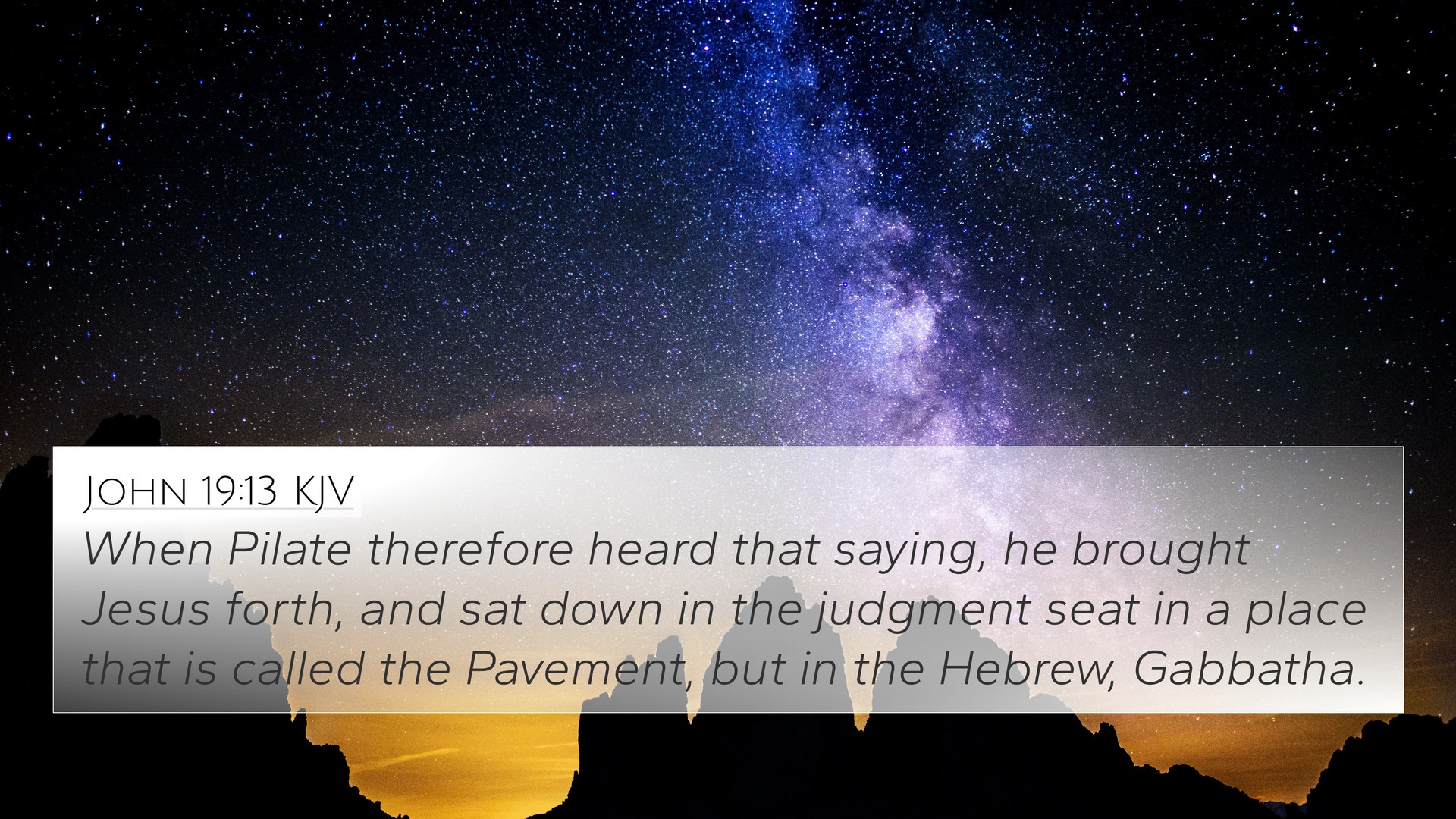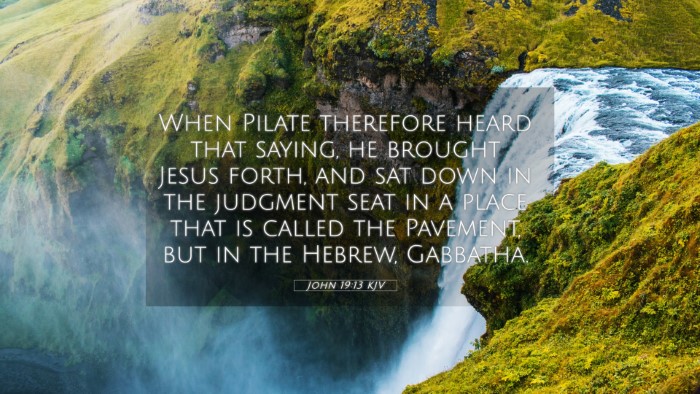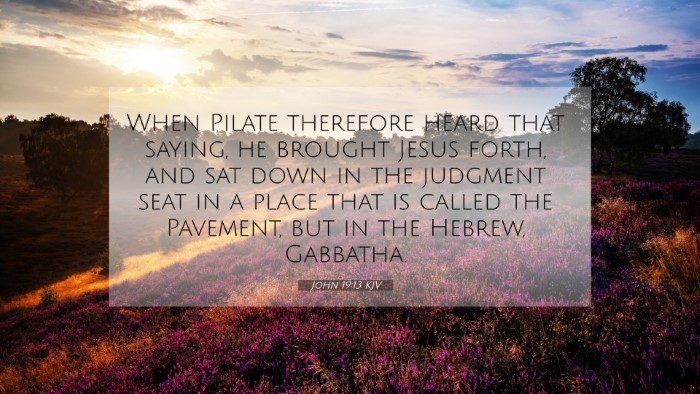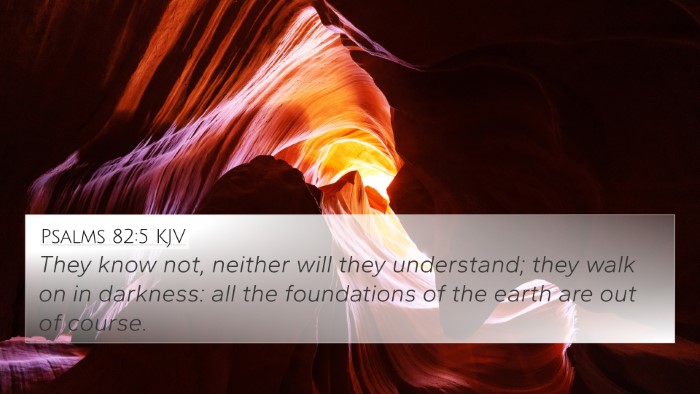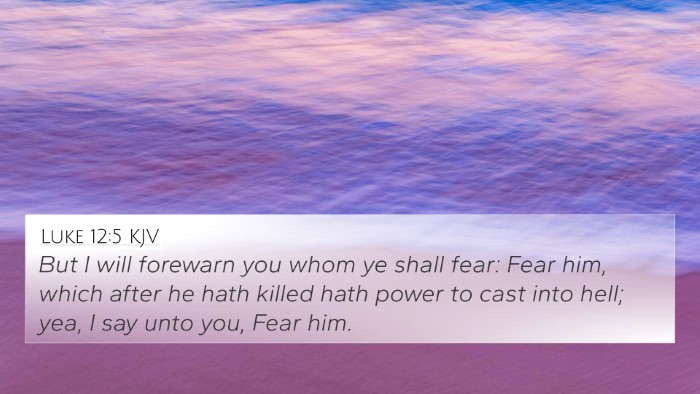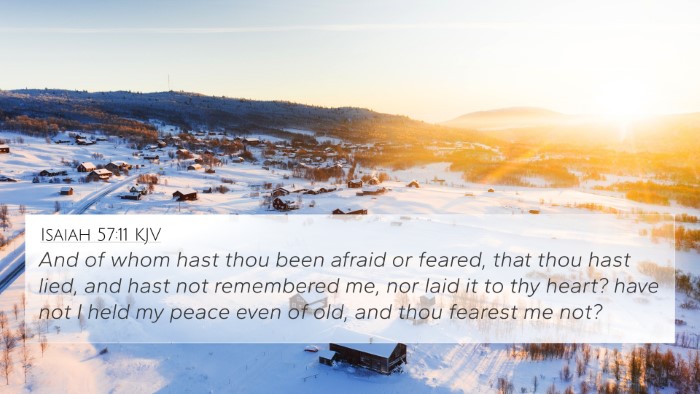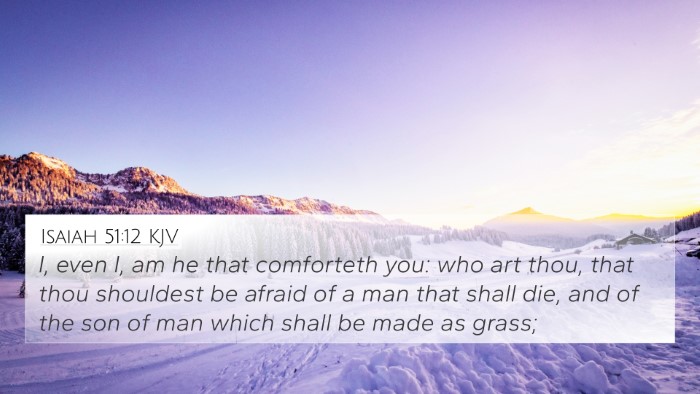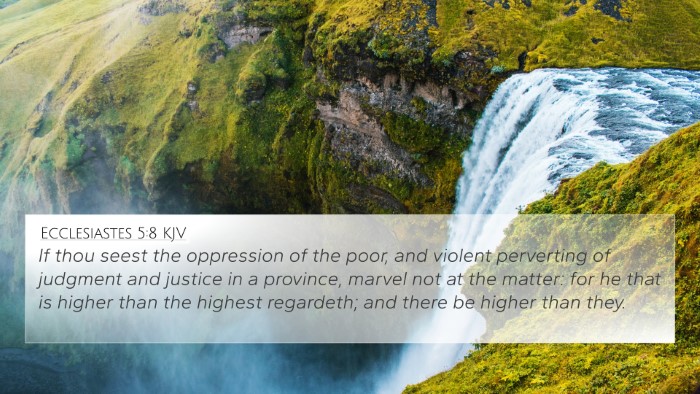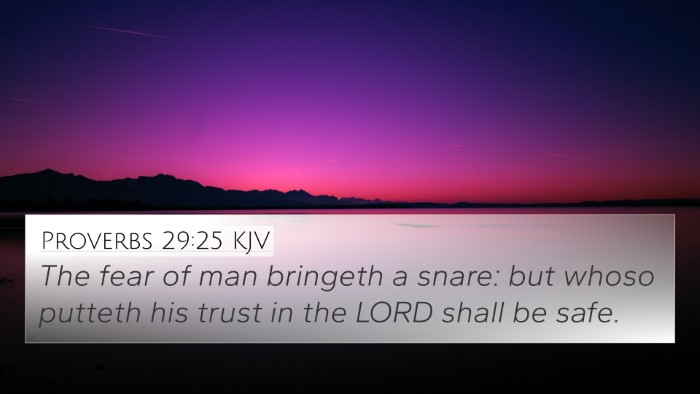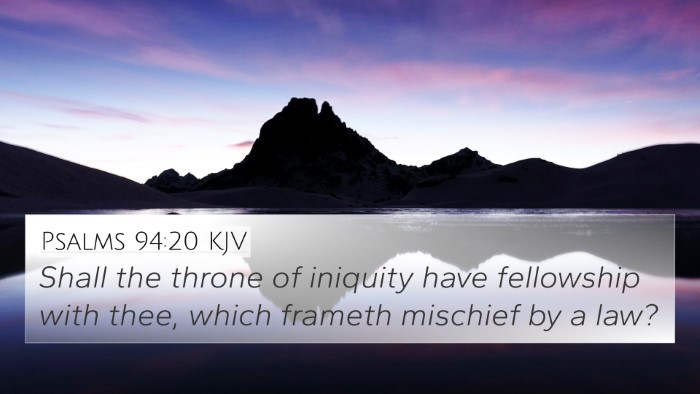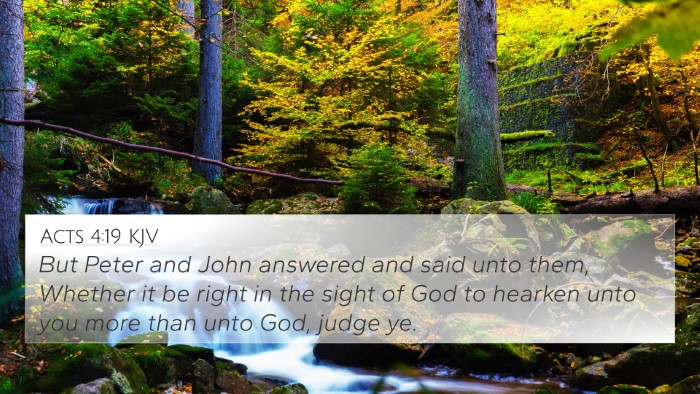Understanding John 19:13
John 19:13 states, "When Pilate therefore heard that saying, he brought Jesus forth, and sat down in the judgment seat in a place that is called the Pavement, but in the Hebrew, Gabbatha." This verse sets the stage for a pivotal moment in the Passion narrative, where the Roman governor, Pontius Pilate, officially presents Jesus to the Jewish leaders and the crowd. This moment is rich in theological significance and historical context, which we will explore through various public domain commentaries.
Context and Significance
This scripture is located in the narrative leading up to the crucifixion of Jesus, making it essential in understanding God's salvific plan through Christ's sacrifice.
The Role of Pilate
Pilate's actions are significant. He is portrayed as a figure caught between his authority and the demands of the Jewish leaders and the mob. Matthew Henry comments that Pilate’s reluctance and indecision highlight the tension between political power and moral obligation. Adam Clarke emphasizes that Pilate sought to wash his hands of responsibility, which stands as a testimony to human behavior in the face of righteousness.
The Judgement Seat
The term "judgment seat" refers to the Bema, a raised platform used by magistrates. Albert Barnes notes how this setting was significant because it showcased the worldly authority that Pilate wielded, yet it is juxtaposed with the divine authority of Jesus. The position from which Pilate sat serves as a symbol of the earthly judgment that would soon pronounce judgment on the King of Glory.
Gabbatha and Its Meaning
Gabbatha, a term indicating "the Pavement," is rich in symbolism. Scholars like Clarke explain that this location served as a literal and figurative platform for judgment, representing the judgment humanity would cast upon Christ. Furthermore, the use of both Greek and Hebrew denotes the universal impact of this event — it transcends cultural boundaries.
Bible Verse Cross-References
John 19:13 connects with several other key verses that inform its interpretation. Below are notable cross-references that enhance understanding:
- Matthew 27:19: Pilate receives a warning from his wife about Jesus’ righteousness.
- Luke 23:22: Pilate realizes he has found no fault in Jesus.
- John 18:31: The Jewish leaders insist on Pilate’s judgment against Jesus.
- Matthew 27:24: Pilate washes his hands, signifying his desire to distance himself from the verdict.
- Isaiah 53:3: Jesus is described as one who is despised and rejected.
- Acts 3:13: Peter refers to Pilate's role in the judgment of Jesus, linking back to this event.
- 1 Peter 2:23: Reflects on how Jesus committed no wrong, resonating with Pilate's own findings.
Connections Between Bible Verses
This verse is not only pivotal within the Gospel of John but establishes connections to deeper themes throughout Scripture.
Thematic Bible Verse Connections
The concept of judgment runs throughout biblical texts. For instance, the prophetic writings in the Old Testament prepare the way for the understanding of Jesus as the ultimate sacrifice, forecast in Isaiah 53 and fulfilled in the New Testament through Pilate’s actions.
Bible Verses That Relate to Each Other
Each cross-referenced verse above reveals a thread of narrative that points to the tragic irony of this moment. Pilate’s judgment of Jesus highlights the paradox of human authority juxtaposed with divine kingship, echoing throughout the New Testament. This invites a comparative study and enhances comprehension of truth in context.
Cross-Referencing Bible Study Methods
Studying verses within their broader biblical context can yield profound insights. The use of tools for Bible cross-referencing such as concordances can aid in this exploration. A cross-reference Bible study method allows readers to see how interconnected the biblical narrative is, demonstrating the intricacies of God’s plan.
How to Use Bible Cross-References
To fully grasp the meaning of John 19:13, one should consider not only the immediate verses before and after this passage, but also the larger story provided by the synoptic gospels and prophetic scripture. For example, linking this verse to Acts 2:23 elaborates on the divine foreknowledge and predestination regarding Jesus’ sacrifice, linking Old Testament prophecy with New Testament fulfillment.
Conclusion
In summary, John 19:13 illuminates the complexity of Jesus’ trial and the political machinations surrounding it. Through comparative analysis and scriptural cross-referencing, we see how this pivotal moment fits into the greater narrative of redemption. Engaging with this verse and its connections enhances our understanding of biblical theology and the overarching story of God’s love and justice.
Further Study Suggestions
- Explore the implications of Pilate's decision in Romans 5:6-8 regarding Christ's sacrifice.
- Study the reactions of the crowd in light of Matthew 27:22 and John 19:15.
- Investigate the fulfillment of Old Testament prophecies referenced in the Gospels.
